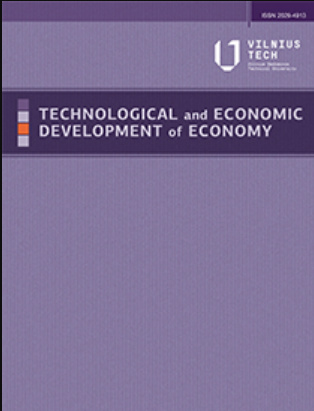中国经济长期增长趋势的驱动因素是什么?基于时变混频动态因子模型的重测
IF 3.9
2区 经济学
Q1 ECONOMICS
引用次数: 0
摘要
中国经济增长趋势前所未有的下行压力引发了几个问题,包括中国长期经济增长趋势的当前水平是什么,是什么驱动和如何抑制下行趋势。因此,我们开发了一个时变混合频率动态因子模型,使用不同开始日期的数据来测量趋势,并对趋势变化进行实时分解。我们发现,自2007年以来,这一趋势进入了下行阶段,2012年以来,这一趋势离开了高速阶段,2018年以来,这一趋势进入了加速下行阶段。目前的趋势水平约为4%。然而,90%置信区间的下限低于2%,低于自然比率水平。此外,资本深化减速、人口红利减少和技术衰退都推动了下降趋势。相比资本深化和人口红利的下推效应相对较弱,均不足2个百分点,下降趋势主要由技术衰退驱动。鉴于技术进步在短期内不太可能有明显的改善,缓解技术进步与过时资本的错配,盘活现有资本存量,提高技术利用效率成为更可行的手段。本文章由计算机程序翻译,如有差异,请以英文原文为准。
WHAT DRIVES CHINA’S LONG-TERM ECONOMIC GROWTH TREND? A RE-MEASUREMENT BASED ON A TIME-VARYING MIXED-FREQUENCY DYNAMIC FACTOR MODEL
The unprecedented downward pressure of China’s economic growth trend raises several questions, including what the current level of China’s long-term economic growth trend is, and what drives and how to inhibit the downward trend. Therefore, we develop a time-varying mixedfrequency dynamic factor model using data with different start dates to measure the trend, and perform a real-time decomposition of changes in the trend. We find that the trend has entered a downward stage since 2007, left a high-speed phase since 2012, and stepped in an accelerated downward stage since 2018. The current level of the trend is about 4%. However, the lower limit of the 90% confidence interval is below 2%, which is lower than natural rate level. Additionally, decelerated capital deepening, diminishing demographic dividend and technological recession all drive the downward trend. Compared to the relatively weak push-down effects of capital deepening and demographic dividend that are less than two percentage points, the downward trend is mainly driven by technological recession. Given that technological progress is unlikely to improve significantly in the short run, mitigating the mismatch between technological progress and obsolete capital, revitalizing existing capital stock, and increasing the efficiency of technology utilization become more feasible means.
求助全文
通过发布文献求助,成功后即可免费获取论文全文。
去求助
来源期刊
CiteScore
10.00
自引率
8.50%
发文量
66
审稿时长
15 weeks
期刊介绍:
Technological and Economic Development of Economy is a refereed journal that publishes original research and review articles and book reviews. The Journal is designed for publishing articles in the following fields of research:
systems for sustainable development,
policy on sustainable development,
legislation on sustainable development,
strategies, approaches and methods for sustainable development,
visions and scenarios for the future,
education for sustainable development,
institutional change and sustainable development,
health care and sustainable development,
alternative economic paradigms for sustainable development,
partnership in the field of sustainable development,
industry and sustainable development,
sustainable development challenges to business and management,
technological changes and sustainable development,
social aspects of sustainability,
economic dimensions of sustainability,
political dimensions of sustainability,
innovations,
life cycle design and assessment,
ethics and sustainability,
sustainable design and material selection,
assessment of environmental impact,
ecology and sustainability,
application case studies,
best practices,
decision making theory,
models of operations research,
theory and practice of operations research,
statistics,
optimization,
simulation.
All papers to be published in Technological and Economic Development of Economy are peer reviewed by two appointed experts. The Journal is published quarterly, in March, June, September and December.

 求助内容:
求助内容: 应助结果提醒方式:
应助结果提醒方式:


